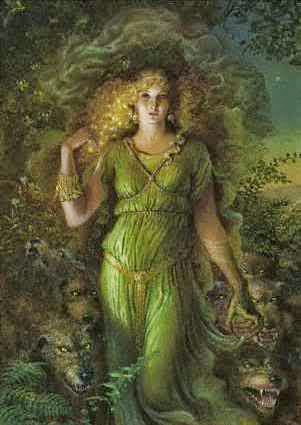Early Description of the Gallic People
The following passage from Dr. Rice Holmes' “Cæsar's Conquest of Gaul” may be taken as an admirable summary of the social physiognomy of that part of Celtica a little before the time of the Christian era, and it corresponds closely to all that is known of the native Irish civilisation:
“The Gallic peoples had risen far above the condition of savages; and the Celticans of the interior, many of whom had already fallen under Roman influence, had attained a certain degree of civilisation, and even of luxury. Their trousers, from which the province took its name of Gallia Bracata, and their many-coloured tartan skirts and cloaks excited the astonishment of their conquerors. The chiefs wore rings and bracelets and necklaces of gold; and when these tall, fair-haired warriors rode forth to battle, with their helmets wrought in the shape of some fierce beast's head, and surmounted by nodding plumes, their chain armour, their long bucklers and their huge clanking swords, they made a splendid show. Walled towns or large villages, the strongholds of the various tribes, were conspicuous on numerous hills. The plains were dotted by scores of oper hamlets. The houses, built of timber and wickerwork, were large and well thatched. The fields in summer were yellow with corn. Roads ran from town to town. Rude bridges spanned the rivers; and barges laden with merchandise floated along them. Ships clumsy indeed
but larger than any that were seen on the Mediterranean, braved the storms of the Bay of Biscay and carried cargoes between the ports of Brittany and the coast of Britain. Tolls were exacted on the goods which were transported on the great waterways; and it was from the farming of these dues that the nobles derived a large part of their wealth. Every tribe had its coinage; and the knowledge of writing in Greek and Roman characters was not confined to the priests. The Æduans were familiar with the plating of copper and of tin. The miners of Aquitaine, of Auvergne, and of the Berri were celebrated for their skill. Indeed, in all that belonged to outward prosperity the peoples of Gaul had made great strides since their kinsmen first came into contact with Rome
but larger than any that were seen on the Mediterranean, braved the storms of the Bay of Biscay and carried cargoes between the ports of Brittany and the coast of Britain. Tolls were exacted on the goods which were transported on the great waterways; and it was from the farming of these dues that the nobles derived a large part of their wealth. Every tribe had its coinage; and the knowledge of writing in Greek and Roman characters was not confined to the priests. The Æduans were familiar with the plating of copper and of tin. The miners of Aquitaine, of Auvergne, and of the Berri were celebrated for their skill. Indeed, in all that belonged to outward prosperity the peoples of Gaul had made great strides since their kinsmen first came into contact with Rome










